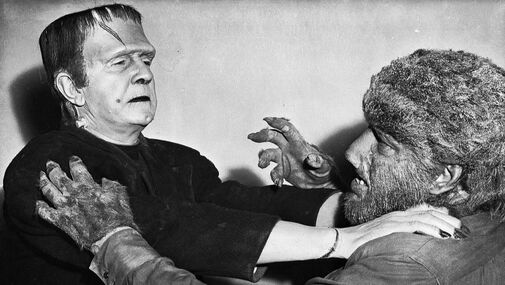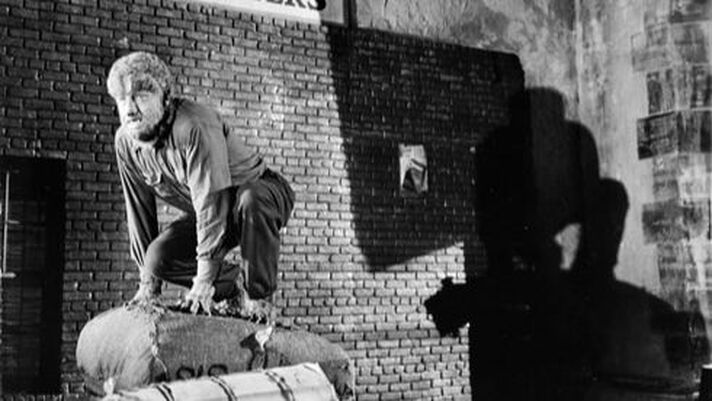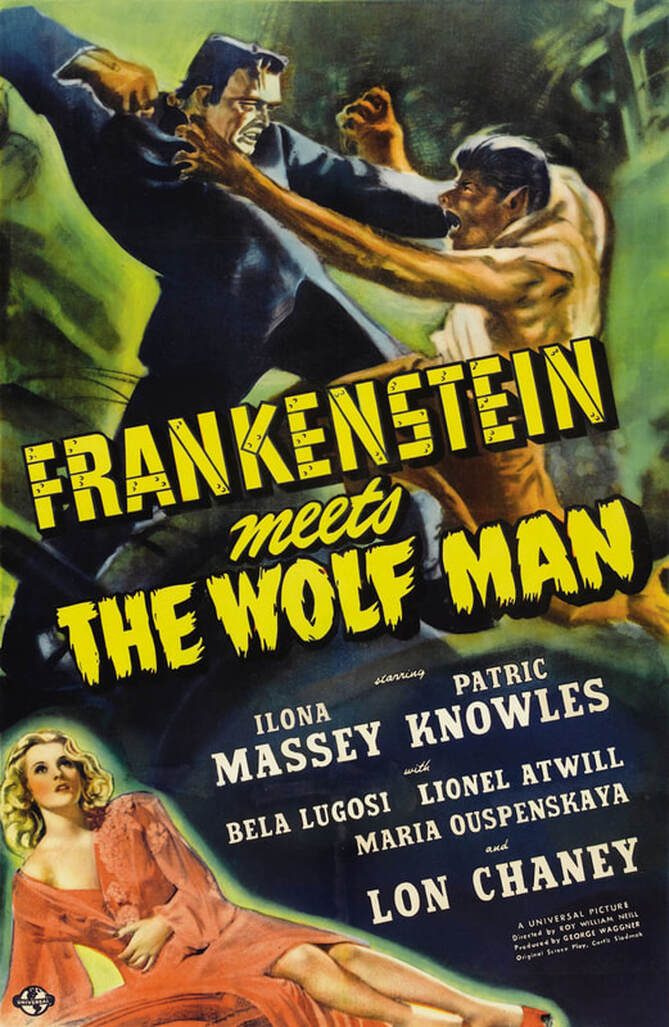 Welcome to a weekly series in which Doris V. Sutherland takes readers on a trip through the history of werewolf cinema... ...For four years since his death in The Wolf Man, Larry Talbot (Lon Chaney Jr.) has been interred in his tomb, his body enshrouded with wolfsbane. But then grave robbers searching for valuables chance to disturb his rest, and when the light of the full moon enters the Talbot family crypt, the Wolf Man rises again. Seeking to end his cursed life for good, Talbot searches Europe for Maleva (Maria Ouspenskaya), the old Romani woman whose son turned him into a werewolf in the first place. When he finds her, Maleva explains that the best person to help him is a certain medical professional who has had past dealings with monsters: Dr. Frankenstein. The doctor himself is now dead, but his daughter Elsa (Ilona Massey) and his infamous Monster (Bela Lugosi) live on. Directed by Roy William Neill and written by Wolf Man scribe Curt Siodmak, Frankenstein Meets the Wolf Man kicked off a new phase for Universal horror: the era of crossovers. It’s also the first sequel to The Wolf Man, and there’s something appropriate about the lycanthropic antihero’s opponent being the product of mad science. Throughout its existence, werewolf cinema had been haunted by horror movie pseudoscience. Wolfblood and The Mad Monster showed lycanthropy brought on by blood transfusion; Werewolf of London made its protagonist a scientist who first transforms in his laboratory; and The Undying Monster had its werewolf explained away by a scientifically-minded investigator. Outside of lost silents, only The Wolf Man made its werewolf unambiguously supernatural. This lends definite symbolic heft to the Wolf Man going up against the creation of cinema’s greatest mad scientist in a battle for supremacy. It’s hard to call the result original – this is an unabashed mash-up of two earlier films, after all – but the film does make a satisfying greatest-hits medley for Universal horror. In our journey from the curiously Anglicised Wales of The Wolf Man to the mythical Mitteleuropa of Frankenstein, we get to revisit all the eerie crypts, jovial villages, Romani caravans and mad scientist laboratories that we have come to love from this era of horror cinema. The film does have a few weak points, the biggest being its handling of Frankenstein’s Monster. The previous entry in Universal’s Frankenstein saga, Ghost of Frankenstein, ended with the Monster receiving a new brain: that of Bela Lugosi’s manipulative Ygor, who had become the series’ main villain. As a side-effect of the transplant, he went blind. Frankenstein Meets the Wolf Man, as scripted and originally filmed, incorporated this plot development by depicting a Monster with the voice and personality of Ygor, whose character arc was based on a desire to cure his blindness and return to his schemes of world domination. But Universal made the late-in-the-day decision to do away with the entire Ygor plot thread, removing the Monster’s dialogue and all references to his blindness and giving the impression that he has the same brain that went in Boris Karloff’s cranium back in 1931. The result is tidier than might be expected from such a drastic last-minute overhaul, but the Monster is left underwritten. More a prop than a character, he shifts from cooperative to violent whenever the storyline needs him to. The change also sabotages Lugosi’s performance as the Monster, as he spends most of his screen time fumbling around sightlessly for no discernable reason. Other than this misstep, the supporting characters who surround Talbot are an engaging lot. A particularly pleasant surprise is Dr. Mannering (Patric Knowles): initially just another of the blandly clean-cut figures who turn up in Universal horrors to act as nominal heroes, by the end of the film the doctor has given into the temptation offered by Frankenstein’s laboratory and become something of a mad scientist himself. The transformation is fun to watch, although it might have been more interesting had the glamorous Elsa Frankenstein taken on this role instead of being consigned to the position of love interest. At the end of the day, Frankenstein Meets the Wolf Man was sold on the simple-minded pleasure of seeing two pioneering horror icons go head to head. Come the climax, the film delivers on this promise, pitting fur against stitches in a brief but energetic battle that – for better or worse – helped to pave the way for the superhero mash-ups that fill today’s box office charts. But it matters little which side wins: by this point it had been firmly established that the monsters are immortal, and will be ready to claw their way back for as long as audiences appreciate them. By Doris V. Sutherland
0 Comments
Leave a Reply. |
Archives
March 2023
|


 RSS Feed
RSS Feed